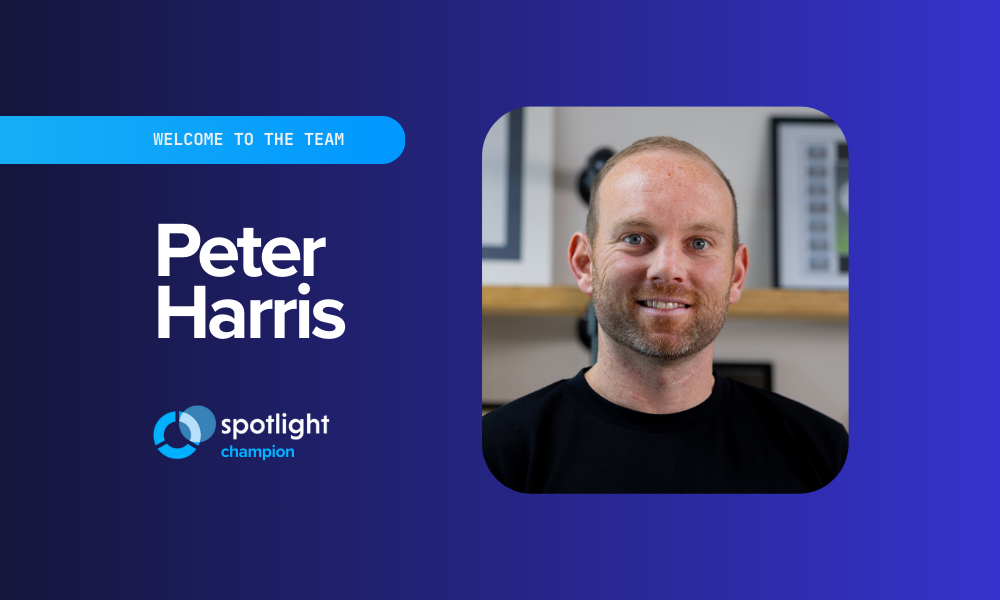Virtual CFO services are a huge value add for clients, and a revenue booster for the firms that offer them.
Dale Crosby, a Director at High Tech Soft Touch Advisors, knows this better than most, having spent the last 20 years helping firms expand into VCFO work. In a recent webinar with James Hoare, Spotlight Reporting Senior Account Manager, Dale laid out his best tips for creating and deploying these services in your firm.
The full webinar is around half an hour, and includes the results of a survey of 300 Accountants on their VCFO best practices. You can watch it here. Otherwise, here’s a quick summary of a few ideas discussed:
.jpg)
The VCFO Journey
When it comes to crafting vCFO services, Dale is of the opinion that the process is a journey, not a one-off project. To give accountants an idea of where they might be on this journey, Dale splits the vCFO pathway into three different stages:
- Basic analytics: evaluating clients’ past patterns and understanding the reason behind these
- Advanced analytics: predicting clients’ future based on these patterns
- Value-adding Analytics: making data-driven decisions to improve business performance
"In all honesty most firms are probably back at the basic analytics phase," says Dale. "Spotlight clients are probably a little more advanced in that they're using forecasting to predict the future, and they're starting to have some strategic conversations. But it can be a real challenge getting to that next level."
To this end, Dale categorises vCFO work into six different areas of focus, which can be worked through in sequence to build up a full vCFO offering:
- Bookkeeping and payroll management
- Accounts payable and receivable
- Cashflow management
- Budgeting and 3-way forecasting
- Management reporting and review
- Advisory board management
The first two aren’t necessary to provide, he says, but it helps to be in charge of a clients’ financial data. That way, you know that it’s accurate, timely, and reliable enough to form the basis for other services like forecasting and proper strategic management reporting.
The firms that really add value, he says, are the ones that help their clients plan and deliver projects, using both financial and non-financial KPIs to drive performance. Often, these firms end up naturally specialising in a specific industry (or two!), as they get referrals from clients who are benefiting from these services.
But while it’s good to know where the vCFO journey might lead you, the important thing is to simply begin.
"You really just have to start somewhere,” says James. “You might be thinking, oh my gosh I have to know Six Sigma (under Advanced) before I get into delivering these services. But that's not the case! You’ll refine your pricing, you’ll refine your service offering, and you’ll gain confidence over time."

Structuring Services
The vCFO industry is still quite young, says Dale, so there's a huge opportunity to add value for firms who can put a system in place for their services. Having a structure for providing vCFO services makes them more cost effective, consistent, and gives teams more confidence.
“As firms start to get more experienced, they start to provide more structure,” says Dale. “Probably because as much as anything else, they feel that they’ve got the internal capacity to be able to create some process and structure around delivery of these services.”
Firms may feel that every client is different, making it difficult to create structure around services. But while the conversations differ from client to client, the structure around preparing for meetings, delivering services, and following up with clients should be the same.
“I’ve heard from firms who were quite surprised about the willingness and appetite within their client base for VCFO services. They just hadn’t been asked, or they just didn’t know that that service was delivered by the firm.”
Just like with any new change, time should be devoted to creating a strategy. Set aside two days for a leader in your firm—a director, partner, or manager—to come up with a business development plan and allocate resources accordingly. Without momentum, new services offerings won’t get off the ground.
The ideal, says Dale, is to have a dedicated vCFO team, who understand what clients need and are experienced in creating reports and providing analysis. This is where tools like Spotlight Reporting can do a lot of the heavy lifting, by providing a report that can anchor vCFO conversations.

Winning VCFO Clients
While creating an internal system is important, it’s only half the equation. The other half is the clients themselves. Accountants often believe that there is no appetite for the vCFO services they want to offer, but this is often not the case.
“I’ve heard from firms who were quite surprised about the willingness and appetite within their client base for VCFO services,” says James. “They just hadn’t been asked, or they just didn’t know that that service was delivered by the firm.”
The key to winning clients, says Dale, is to identify what they need, and let them know how your vCFO services are the solution. This isn’t so much a sales pitch as a good conversation, that shows the client that you’re firmly in their corner. Plus, if you identify a need upfront, the client is more likely to see the value of what you’re offering.
“Start having good conversations with clients,” says Dale. “Don’t tell the clients what you do, but explain through your conversations what value you can add. And that’s how you change, or reframe the relationship.”
To watch the full webinar, including the results of a survey of 300 of Dale’s clients, click here.














